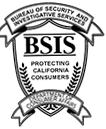Green Knight Security California Private Investigator License #188172
BUG SWEEPS
Is your private information Secure?
Have you thought that you may be a victim of eavesdropping or surveillance of any sort, in your office, residence or vehicle? Green Knight Security’s (GKS) technicians can help you. GKS has professional team members trained in Technical Surveillance Counter-Measures, Bug Sweeps & Electronic Counter Surveillance Services to detect and remove electronic eavesdropping devices (Bugs). We utilize state-or-the-art equipment to perform inspections and bug sweeps which identify various types of audio and video interception devices.
Contact us for a confidential free consultation.
Questions?
If you have a question that is not addressed below, send us an email. Our team is ready to assist. We don’t address pricing on the website as each project and client has different needs. We welcome the opportunity to provide you a quote based on the scope of the project.
What is the definition of Technical Counter Surveillance?
TSCM (technical surveillance counter-measures) is the original Federal government abbreviation denoting the process of bug sweeping or electronic counter surveillance. The U.S. Dept. of Defense defines a TSCM survey as a service provided by qualified personnel to detect the presence of surveillance devices and hazards and to identify technical security weaknesses that could aid in the conduct of a technical penetration of the surveyed facility. A TSCM survey will provide a professional evaluation of the facility's technical security posture and normally will consist of a thorough visual, electronic, and physical examination in and about the surveyed facility.
What is Technical Surveillance Countermeasures?
Technical Surveillance Countermeasures (TSCM) can best be defined as the systematic physical and electronic examination of a designated area by properly trained, qualified and equipped persons in an attempt to discover electronic eavesdropping devices, security hazards or security weaknesses.
Who is a target of spying?
Any Company, law firm, non-profit entity, government or private individuals. No one is immune from spying. Basically, if you discuss valuable information that would benefit anyone, then you are a potential target of electronic eavesdropping.
What are some warning signs that you may be the subject of spying?
- You have an unexplained decrease in sales.
- You recently lost a Bid that you would normally win.
- Your company’s strategies or pricing are revealed.
- Contract negotiations are increasing more difficult.
- Trade secrets are exposed.
- Business expansion plans are being revealed.
Where are you likely to be targeted?
The boardroom, telephones, mobile phones, fax machines, computers are examples of sources of confidential information that may be targets for the eavesdropper. Executives and other key personnel can be targets at home or in their automobiles.
What are places where a listening device will/can be hidden?
- Offices, conference rooms and boardrooms.
- Private Residences.
- Executive Residences/Apartments.
- Vehicles (Cars, Aircraft, Boats).
- Home Phones (landlines).
- Hotels.
Our Technicians typically search for the following devices:
- Wireless video devices.
- Laser and infrared eavesdropping devices.
- RF, UHF and VHF wireless transmitters.
- Telephone & GSM Bugs.
- Wire and microphone taps.
- Audio devices.
What happens during a TSCM Inspection?
During the actual inspection, our team will visit your location of concern and perform a physical, visual and electronic inspection to determine the presence and location of any and all electronic eavesdropping devices.
During physical inspections, we thoroughly examining furniture, outlets, ceilings, and other locations commonly used to hide microphones, recording devices, transmitters, camera systems, and more.
During visual inspections, we look for hidden eavesdropping devices in areas in which they are commonly found.
During the electronic inspection, we use a sophisticated electronic equipment to identify and locate signals and other signs from eavesdropping equipment that may be secreted in the area.
How long does a sweep take?
Sweeps take anywhere from a few hours, to a few days. It depends on the size of the area or building to be swept, and the amount of electronic and communications present within the concerned area.







